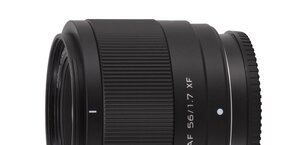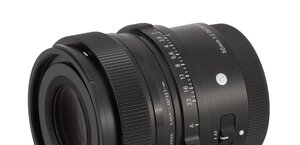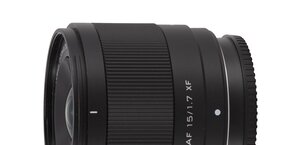Tamron 70-180 mm f/2.8 Di III VC VXD G2
3. Build quality and image stabilization
In the photo below the Tamron 70-180 mm f/2.8 G2 is positioned next to the Tamron 28-75 mm f/2.8 Di III VXD G2, and the Sigma A 35 mm f/1.4 DG HSM.
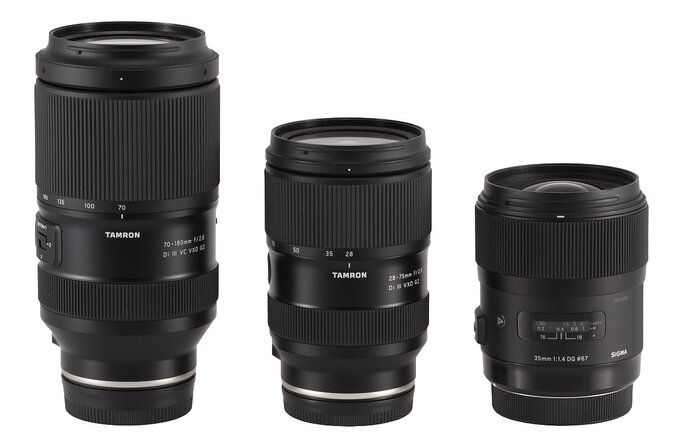 |
Please Support UsIf you enjoy our reviews and articles, and you want us to continue our work please, support our website by donating through PayPal. The funds are going to be used for paying our editorial team, renting servers, and equipping our testing studio; only that way we will be able to continue providing you interesting content for free. |
- - - - - - - - - - - - - - - - - - - - - - - - - - - - - - - - - - - - - - - - - - - - - - - -
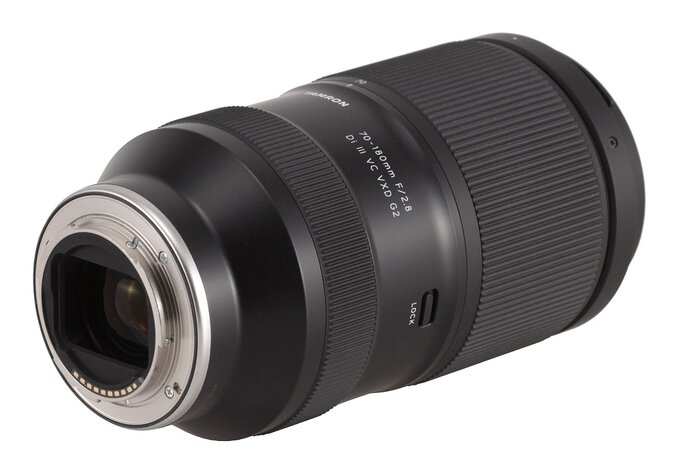 |
The ring increases its diameter very quickly and already on its enlargened part you find an USB-C port that allows you to connect the lens to a computer, allot different functions to its buttons, correct the autofocus, or just upgrade the newest version of software with the help of the Tamron Lens Utility program
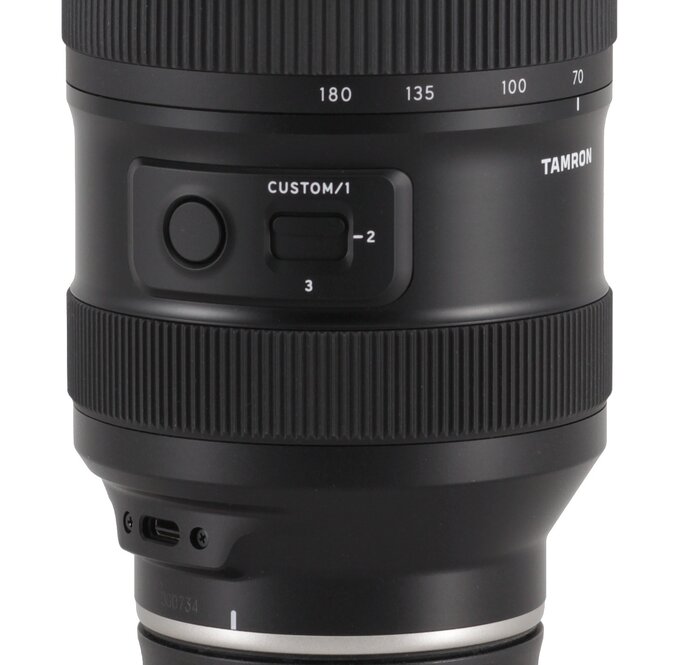 |
Further on you see an immobile part of the barrel with the logo of the company, parameters of the lens, the filter diameter amounting to 67 mm, the name of the model (A063), and information that the instrument was designed in Japan. On the left side there is a round, programmable button and a stabilization mode control switch.
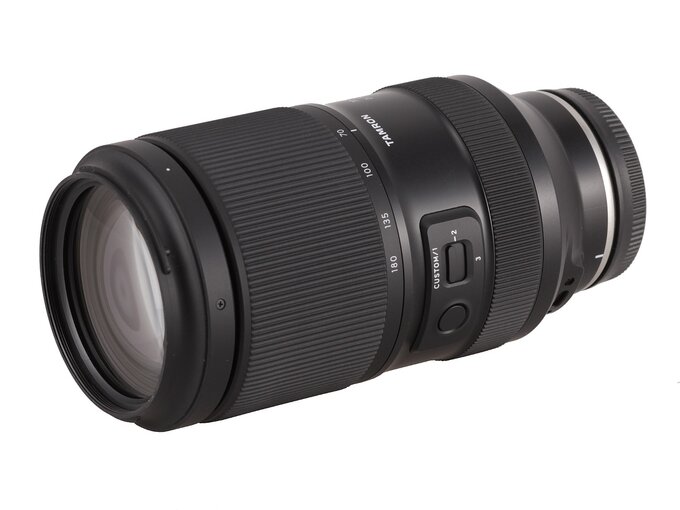 |
After moving this ring from the 70 to the 180 mm focal length the lens gets longer by 28 mm as a uniform plastic tube, ending with the front element system, is pulled out.
The front element, 60 mm in diameter, is surrounded by a non-rotating flter thread, 67 mm in diameter, and a hood mount.
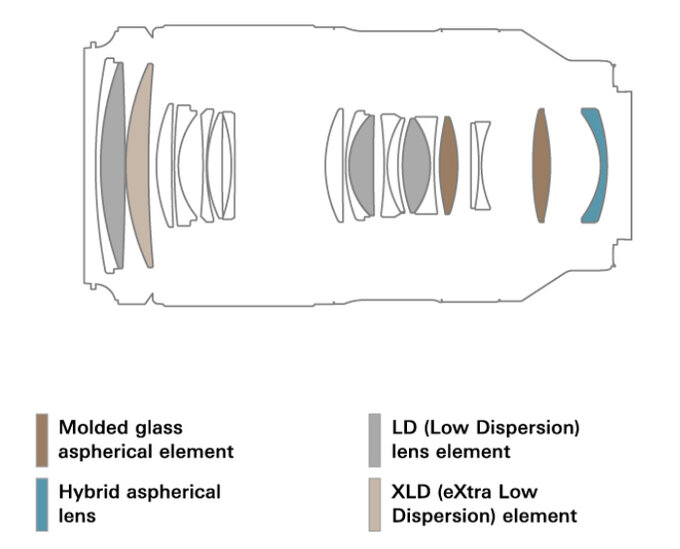 |
Buyers get in the box with the lens: both caps, and a petal-type hood.
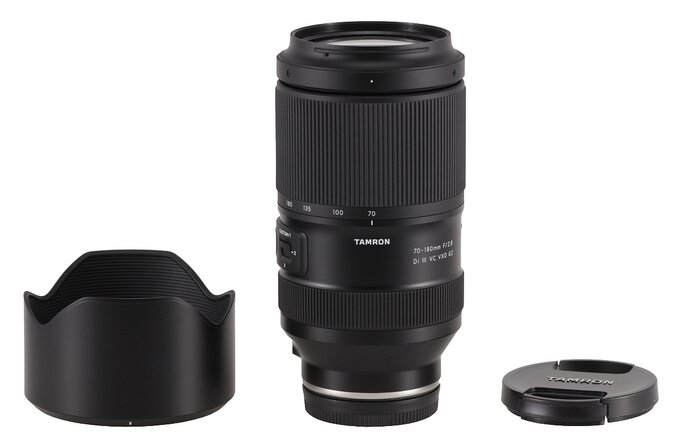 |
Image stabilization
The producer declares that the Tamron's 70-180 mm f/2.8 G2 is equipped with the optical VC5 stabilization unit. In order to check its efficiency we took several dozen photos at the 180 mm focal length for every exposure time ranging from 1/250 to 1/5 of a second with the stabilization switched on and off. Then we determined the percentage of fuzzy photos at every exposure time. It is presented as the exposure time function graph below (expressed in EV and 0 EV is the equivalent of 1/200 of a second).
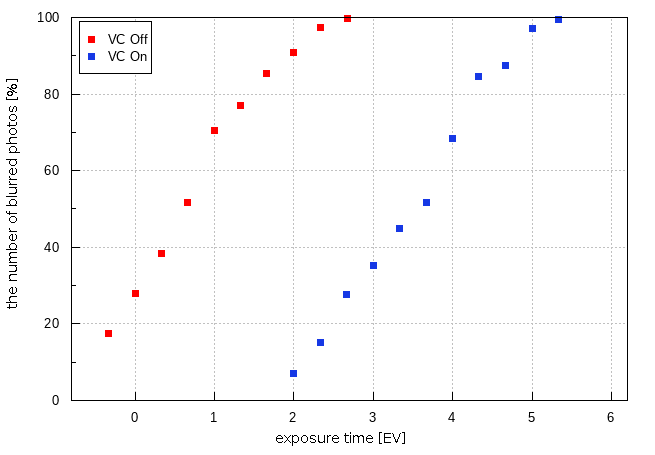
As you see, the maximum distance between both curves reaches near 3.3 EV and we estimate the efficiency of the tested lens’s stabilization module to be as good as that. The result is sensible, not giving you any reason for being speechless with delight, because the best lenses of this class can have results of 4 EV and more, but also being nothing to carp about.




